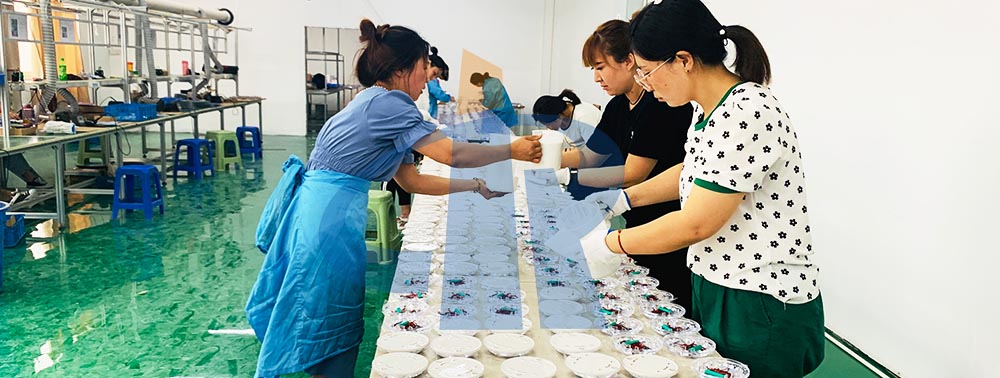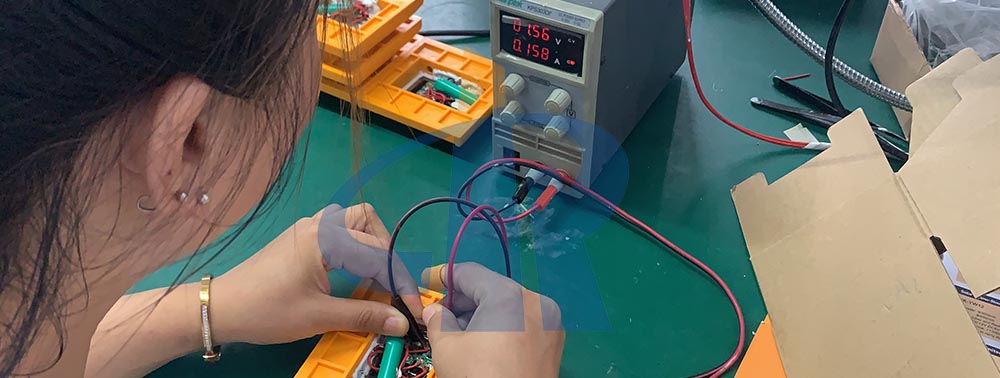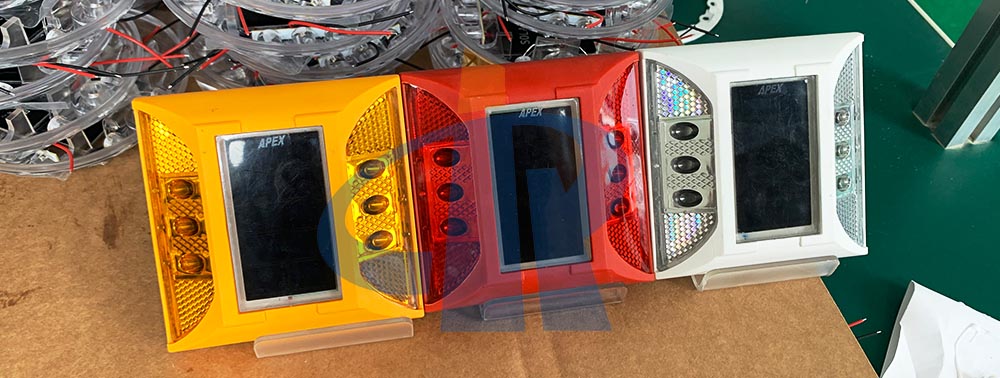Lithium battery
Solar Studs are powered by crystalline silicon solar panels, lithium battery storage batteries, ultra-bright
LED Solar Studs as a light source, and controlled by an intelligent charge and discharge controller to replace traditional Solar Studs.
No need to lay cables, no AC power supply, no electricity bills; it has the advantages of good stability, long life, high luminous efficiency, easy installation and maintenance, high safety performance, energy saving and environmental protection. Because of the above advantages, the application of lithium battery Solar Studs is more and more More and more, but no matter how good the product is, it can't be completely without problems, so here we have collected some common detection and maintenance methods about lithium battery
Solar Studs for everyone to learn together.

1.
Road Studs controller detection:
The red light of the
Road Studs controller is on to indicate that it is charging, the red light flashes to indicate that the battery is fully charged, and the
Road Studs controller is charging with a small pulsed current.
Road Studs controller yellow light: indicates that the battery has been depleted and cannot work normally. The light will be on. If the battery wire is disconnected and reconnected, the light will be on. The controller detects that the battery has been charged after a day and the battery It is not the floating voltage of the battery that increases the capacity (recovery voltage when the load is disconnected).
2.
Solar Road Studs panels:
If the connection of the solar panel is not very firm, it will not be able to charge normally. The usual performance is voltage (voltmeter test), the normal open circuit voltage is above 17.5V, but there is no current. This phenomenon is that the wires of the
Road Studs battery board are not properly connected (there is a virtual welding at the welding place or the joint is not firm). The troubleshooting method can be directly used after the black electrical cover behind the
Road Studs battery board is opened, and directly use the voltage and ammeter to test the data. If there is no current in the aluminum foil detection of the direct heavy battery board, it means that there is a problem with the
Road Studs battery board and needs to be replaced.

3.
Road Studs lithium battery:
Lithium batteries should be charged and discharged normally under normal conditions. If the detected voltage is above 12V, and the voltage drops within a short time after the lamp (load) is connected, it means that the battery is damaged. If the
Road Studs cannot be used normally, it needs to be replaced with a new one. Yes, the Road Studs lithium battery will turn off the lights earlier or reduce the time of rainy days due to the decrease in capacity after five years. This is a normal phenomenon.
4. LED Road Studs lamps:
LED Road Studs light source can not work normally when the battery voltage is normal. If the light is not on, you can directly connect the positive and negative poles of the lamp to the positive and negative poles of the battery to check. If the light source can light up, it means
Road Studs The lamp is good, the Road Studs controller does not supply power to the load, and the controller has problems. This phenomenon is that the battery voltage is not enough after a long time in cloudy and rainy days. When the battery voltage is lower than the following, the controller will forcibly turn off the lights.) The lights can work normally only after the battery is fully charged and the voltage rises to 12V (24V). If the Road Studs light fixture is directly connected to the light and the light fixture does not light up, there is a problem with the
Road Studs light. This phenomenon is reflected as: there is a problem with the circuit control components of the
Road Studs control lamps (high current, high voltage breakdown or components falling off), in this case, contact the factory to replace them in time.

5.
LED Solar Road Studs lamps are also bright during the day, and the lights are not turned off during the day. Such situations indicate:
1. The solar panel does not charge the battery during the day.
2. The positive and negative poles of the Solar Road Studs controller connection are reversed.
3. In the event of a short circuit, the Solar Road Studs controller cannot detect the current.
4.
Solar Road Studs controller has quality problems.
5. The line is damaged, because the solar light uses a "low-voltage wire" and each cable is composed of many thin copper wires. When we installed it again, we accidentally broke the copper wire in the insulating varnish and the surface could not be seen, but at this time there was only voltage but no current. is charged, the battery is depleted). In addition, the insulating paint layer of the wire was broken during installation, and the wire was conducted through the light pole, causing a short circuit, the battery board was short-circuited and not charged, the battery was short-circuited and sparked, and the
Solar Road Studs lamps were short-circuited and did not light up.


